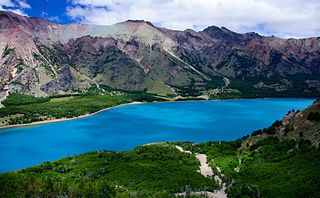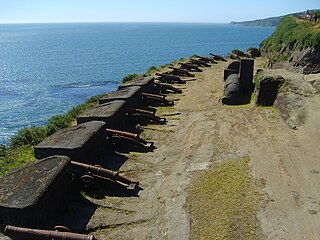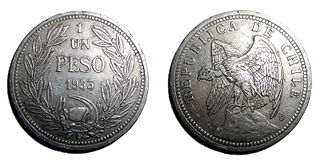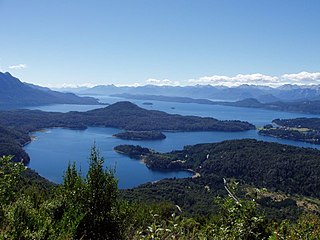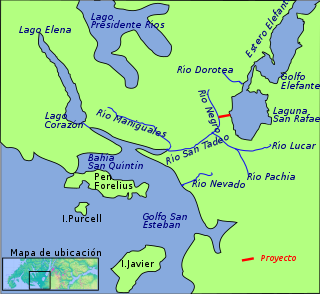Timeline of privateer and pirate activity
The following is a list of expedition and seafarers who landed or sailed in Chile with hostile intentions towards Spain or during times the country they served was at war with Spain.
| Year(s) | Commander | Places attacked | Details |
|---|---|---|---|
| 1578–1580 | Valparaíso, La Serena, Arica | Francis Drake was one of the first corsairs to attack the Chilean coast. With his ship the Golden Hind Drake sailed north along the Pacific coast of South America, attacking Spanish ports and pillaging towns. Some Spanish ships were captured, and Drake used their more accurate charts. Before reaching the coast of Peru, Drake visited Mocha Island, where he was seriously injured by hostile Mapuche. Later he sacked the port of Valparaíso further north in Chile where he also captured a ship full of Chilean wine. [4] | |
| 1587 | Quintero | Thomas Cavendish's expedition begun once he sailed off Plymouth in 1586. He entered the Strait of Magellan and after finding the settlement of Ciudad del Rey Don Felipe abandoned, which he named Port Famine, he sailed north to the thriving Spanish settlements in Chile. At the ruins of Ciudad del Rey Don Felipe Cavendish rescued a survivor who later escaped and alarmed Spanish authorities of Cavendish's presence. Cavendish made a failed attempt at attacking the port of Quintero in Central Chile before he left Chile for Peru, Mexico and the Philippines. [5] | |
| 1593 | Valparaíso | In 1593, the English privateer Richard Hawkins led an expedition to the Pacific with three ships. Passing the Strait of Magellan, he had one ship left, the Dainty, with which Hawkins transited some parts of the Chilean coast and attacked Valparaíso. [6] He was later captured by a Spanish squadron from the Fleet of the South Sea. Hawkins was pardoned and deported back to England. [7] [8] | |
| 1600 | None | Visited Santa María Island | |
| 1600 | Castro | In 1600 local Huilliche joined the Dutch corsair Baltazar de Cordes to attack the Spanish settlement of Castro. [9] [10] While this was a sporadic attack the Spanish believed the Dutch could attempt to ally the Mapuches and establish a stronghold in southern Chile. [11] | |
| 1614 | None | Visited Santa María Island | |
| 1643 | Carelmapu, Castro | The Spanish knew of the Dutch plans to establish themselves at the ruins of Valdivia so they attempted to re-establish Spanish rule there before the Dutch arrived again. [12] The Spanish attempts were thwarted in the 1630s when Mapuches did not allow the Spanish to pass by their territory. [12] The Dutch occupation of Valdivia in 1643 caused great alarm among Spanish authorities and triggered the construction of the Valdivian Fort System that begun in 1645. [13] [14] | |
| 1670 | None | In response to John Narborough's explorations and Cristóbal Talcapillán's claims of English bases in Patagonia the Spanish organized the Antonio de Vea expedition which ran the 1675–1676 summer seeking to find out any news about English presence. [15] | |
| 1680–1681 | La Serena, Iquique, Arica | In 1680 the English corsair Bartholomew Sharp raided in turn La Serena, Iquique, Arica to then continue to attack Spanish possessions in Peru. The Spanish governor José de Garro had foreknowledge of Sharps incursion and ordered Valparaíso, Concepción and Valdivia to prepare. In this view the raid on La Serena was a complete surprise for the Spanish. At the very last moment a militia was formed in La Serena but it was dispersed after a confrontation with Sharps troops. La Serena's inhabitants fled the city and Sharp occupied it for three days. [16] | |
| 1686 | La Serena | In May 1686 he landed in Tongoy near La Serena. The Spanish engaged the pirates who left. One pirate was taken prisoner and sent to Lima. | |
| 1686 | La Serena | In September 1686 Davis led a failed attack on La Serena. Upon meeting resistance pirates took up a defensive position in a local church. When finally leaving the city the pirates had lost 11 men, including a prisoner who died shortly thereafter. | |
| 1704 | None | Left Alexander Selkirk on Robinson Crusoe Island. | |
| 1709 | None | Picked up Alexander Selkirk on Robinson Crusoe Island. | |
| 1720 | None | On 25 May 1720 the Shelvocke's ship Speedwell was wrecked on an island of Juan Fernández called Más a Tierra by the Spanish. Shelvocke and his crew were marooned there for five months but managed to build a 20-ton boat using some timbers and hardware salvaged from the wreck, in addition to wood obtained from locally felled trees. They left the island on 6 October to continue hostilities against the Spanish Empire. | |
| 1721 | Arica | ||
| 1741 | None | The arrival of George Anson's expedition to Chilean waters happened at a time Spain and Britain were at war. After a troublesome passage into the Pacific from the Atlantic the remaining ships ( Centurion and Tryal) regrouped in Juan Fernández Islands. HMS Wager wrecked in Guayaneco Archipelago leading to various searches by the Spanish after the survivors or any further British activity in western Patagonia. [2] |
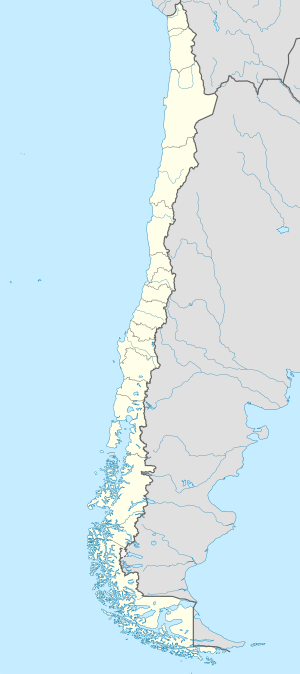
- Seven Years' War
As consequence of the Seven Years' War the Valdivian Fort System, a Spanish defensive complex in southern Chile, was updated and reinforced from 1764 onwards. Other vulnerable localities of colonial Chile such as Chiloé Archipelago, Concepción, Juan Fernández Islands and Valparaíso were also made ready for an eventual English attack. [8] [17]
- American Revolutionary War
With Spain and Great Britain at war again in the 1770s due to the American Revolutionary War local Spanish authorities in Chile received in 1779 the warning that a British fleet commanded by Edward Hughes was heading to Chilean coasts for an imminent attack. As consequence of this the Viceroyalty of Peru send economic aid to the garrisons at Valparaíso and Valdivia. The suspected attack did however never happen. In late 1788 suspicion of British attack arose once again, this time stemming from observations of ships off the coast of Coquimbo. A defense plan where militias played a major role was hastily made up. [3]



